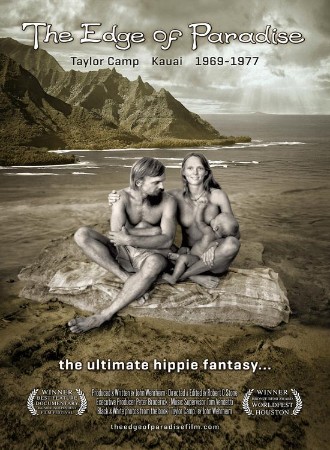
The Edge of Paradise 2018
Distributed by Passion River Films, 154 Mt. Bethel Rd., Warren, NJ 07059; 732-321-0711
Produced by John Wehrheim
Directed by Robert C. Stone
Streaming, 85 mins
General Adult
Photography; Popular Culture; Social Movements
Date Entered: 03/30/2020
Reviewed by Linda Frederiksen, Washington State University, Vancouver, WA (retired)The early 1970s was a time of great social upheaval in the United States. An unpopular war in Southeast Asia, along with civil unrest and police violence at home, drove many young people into seeking alternative lifestyles, as far removed from mainstream society as possible. Small, often isolated, communities or communes – groups of people living together and sharing possessions and responsibilities – were established around the country to fill the need for a different way of living. In Hawaii, on the small island of Kaua’i, one such community developed on 7 acres of land owned by Howard Taylor, the brother of actress Elizabeth Taylor. From 1969-1977, a group that eventually grew to about 100 hippies, surfers, children, and returning Vietnam vets lived in treehouses and other temporary dwellings at Taylor Camp. In 1977, the commune came to an end, and the campers dispersed. During its heyday, however, it was for most of the campers a true paradise and a defining moment in time.
Combining still photographs and archival footage with personal interviews with both the camp residents and local islanders, the film is a remake of an earlier project titled “Taylor Camp.” The remake includes additional high definition film sequences, photographs, music clips, and interviews. The pacing of the film is, at times, uneven with little attention paid to the reasons for the final eviction. Likewise, although some of the challenges of living in what appears to be an idyllic paradise are mentioned in passing, the film is more of a paean to an experience than a sociological study of a social or cultural movement. At its core, however, are the exceptionally evocative black and white photographs of the clothing-optional camp and the campers made at the time by writer and producer John Wehrheim. The result is a stunning visual record of a very specific and unique time and place that few other accounts have ever captured as fully or as beautifully. Caution: the film contains some graphic images from the Vietnam War.